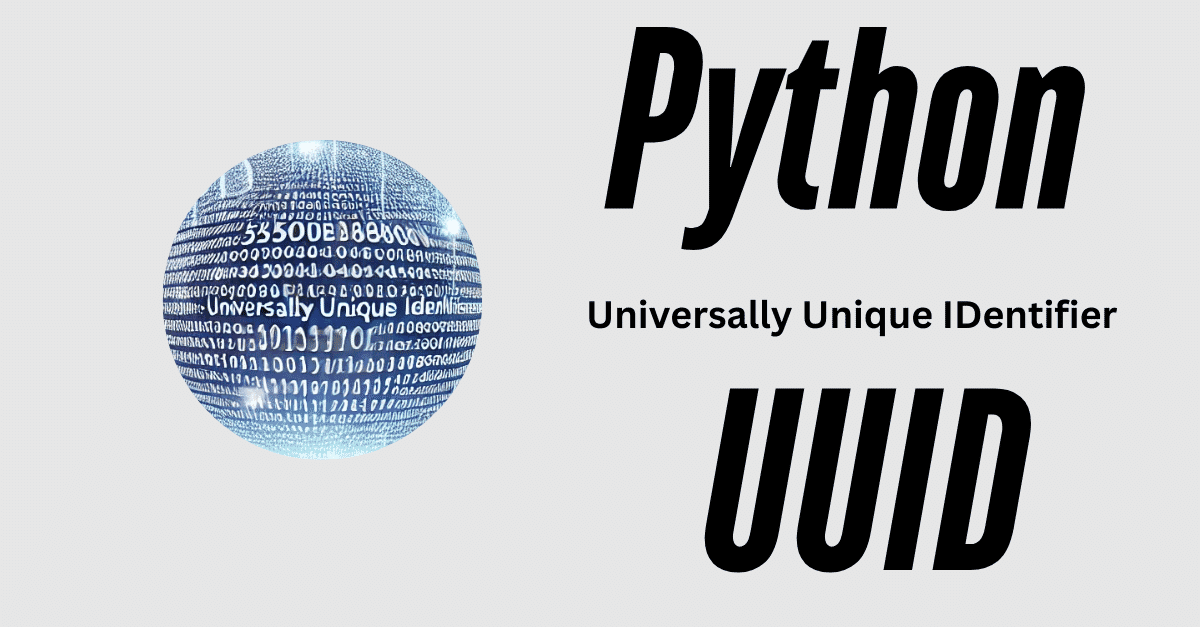UUIDs, or Universally Unique Identifiers, are a vital part of programming in Python, especially when it comes to creating unique identifiers for data records. This guide provides a comprehensive look at how to work with UUIDs in Python, why they're essential, and best practices for their use.
The Problem of Unique Identification
Every application has a need for unique identifiers. Whether you are tracking users, managing data entries, or combining datasets, avoiding duplicates is crucial. Manual creation of unique IDs can lead to errors and conflicts, especially in larger systems.
Introducing UUIDs: A Solution to Data Collisions
UUIDs offer a robust solution to the problem of unique identification. They are 128-bit numbers that are designed to be unique across both space and time. This means that different systems can create UUIDs independently without running the risk of duplication.
The Scope of this Guide
In this guide, we will explore the concept of UUIDs, how to generate them using Python's uuid module, and their practical applications in databases and various systems. We will also share best practices and troubleshooting tips.
Understanding UUIDs in Python
What is a UUID? Defining the Concept
A UUID, or Universally Unique Identifier, is a standardized format for identifying information in a system. Each UUID is a 36-character string formatted as xxxxxxxx-xxxx-Mxxx-Nxxx-xxxxxxxxxxxx, where:
xis any hexadecimal digit.Mindicates the UUID version.Nspecifies certain bits used for variant.
UUID Versions and Their Uses
There are several UUID versions, each serving different purposes:
- Version 1: Time-based UUIDs using a timestamp and MAC address.
- Version 3: Name-based UUIDs using MD5 hashing.
- Version 4: Randomly generated UUIDs, which are very popular.
- Version 5: Similar to version 3 but uses SHA-1 hashing.
Python's uuid Module: A Deep Dive
Python features a built-in uuid module that allows easy generation and manipulation of UUIDs. To use it, simply import the module:
import uuid
You can create UUIDs with straightforward functions, making it user-friendly even for beginners.
Generating UUIDs with Python
Using the uuid.uuid4() Function
To generate a random UUID, use the following command:
random_uuid = uuid.uuid4()
This generates a version 4 UUID, which is based on random numbers.
Generating UUIDs with Specific Versions
You can also generate UUIDs of different versions:
- Version 1:
uuid1 = uuid.uuid1()
- Version 3:
name_based_uuid = uuid.uuid3(uuid.NAMESPACE_DNS, 'example.com')
- Version 5:
name_based_uuid_v5 = uuid.uuid5(uuid.NAMESPACE_DNS, 'example.com')
Tips for Secure UUID Generation
While UUIDs are generally safe, consider these tips for added security:
- Use Version 4 for most applications, as it relies on randomness.
- Avoid exposing the generation process to potential attackers.
Working with UUIDs in Databases
Integrating UUIDs into Relational Databases (e.g., PostgreSQL, MySQL)
Using UUIDs as primary keys in relational databases helps maintain uniqueness across distributed systems. In PostgreSQL, you can define a column as UUID:
CREATE TABLE users (
id UUID PRIMARY KEY,
name VARCHAR(100)
);
Handling UUIDs in NoSQL Databases (e.g., MongoDB)
In NoSQL databases like MongoDB, you can store UUIDs as strings or binary data. Storing them as strings is simple:
collection.insert_one({"_id": str(uuid.uuid4()), "name": "John Doe"})
Optimizing Database Performance with UUIDs
While UUIDs ensure uniqueness, they can affect database performance due to their size. To improve performance:
- Use a UUID compression library.
- Index UUID fields properly.
Practical Applications of UUIDs
UUIDs in File Systems
UUIDs serve as unique identifiers for files and volumes. Many filesystems, like ext4, use UUIDs to manage storage spaces efficiently.
UUIDs in Distributed Systems
In distributed systems, UUIDs prevent collisions when merging data from multiple sources. Each node can generate its UUIDs independently.
Real-world Examples: Case Studies of UUID Implementation
- Cloud Storage: Services like AWS employ UUIDs for object identification.
- User Accounts: Websites often utilize UUIDs for anonymous user IDs.
Best Practices and Troubleshooting
Choosing the Right UUID Version for Your Application
Select the UUID version based on your needs. For random identifiers, use version 4. If you need a deterministic ID based on a namespace, consider version 3 or 5.
Error Handling and Debugging
When working with UUIDs, handle exceptions effectively:
try:
my_uuid = uuid.UUID('invalid-uuid')
except ValueError:
print("Invalid UUID format.")
Advanced Techniques for UUID Management
Explore libraries for enhanced UUID handling, such as uuid-utils for additional features like validation and comparison.
Conclusion: Mastering Python UUIDs for Efficient Data Management
Through this guide, you have learned about UUIDs and their importance in Python programming. By understanding how to generate, integrate, and manage UUIDs efficiently, you can ensure unique identification in your applications.
Key Takeaways and Best Practices Recap
- Use UUIDs to prevent data collisions.
- Choose the appropriate version based on your application.
- Handle UUIDs properly in your database for optimal performance.
Further Exploration and Resources
For more information, explore the official Python documentation and consider libraries that enhance UUID functionality. By mastering UUIDs, you are well-equipped for efficient data management in your projects.







nice article i would say